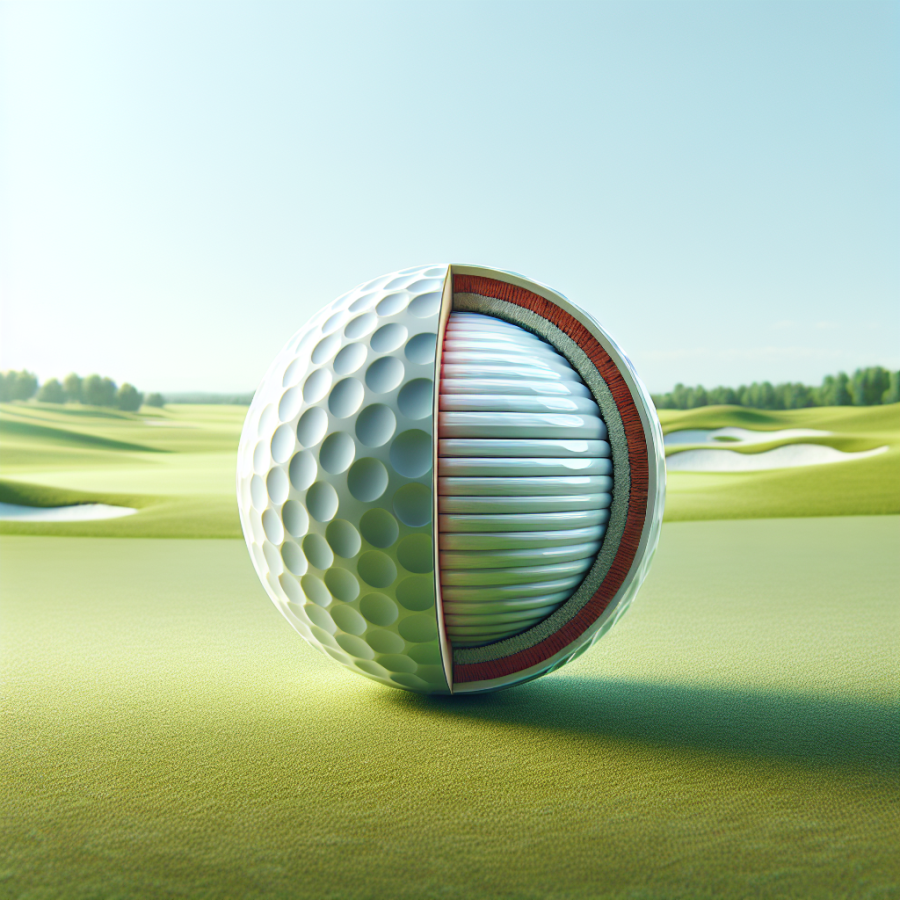Breaking Down Misconceptions: Are Golf Balls Really Hollow?
The question of whether golf balls are hollow is one that emerges fairly regularly, particularly among those new to the sport. If you are among those who are unrest, let's settle this debate once and for all: Golf balls are not hollow. This counter-intuitive fact can raise eyebrows, especially when you consider the golf ball's impressive long-distance flights. So, let's delve a little deeper into the fascinating world of golf ball construction to extinguish any remaining doubts you may have.
Golf balls are constructed in several layers, providing them with a distinct structure that contributes to their distance, spin, and overall performance. Different types of golf balls exist, each with their unique structure: one-piece, two-piece, three-piece, and so on up to five-piece golf balls. None of these designs are hollow.
The one-piece golf ball, primarily used for beginner's practice or mini-golf, consists of a solid piece of Surlyn with dimples molded into it. Looking closely at the two-piece golf ball, the most common type for casual golfers, you'll find it features a single, solid core usually made of hard plastic, enclosed in a cover.
Higher-level golfers typically use the three-piece golf ball, made up of the core (rubber or liquid-filled), a layer of enhanced rubber or liquid-produced plastic, and an outer shell. Similarly, four-piece and five-piece golf balls follow alike steps but with additional layers aimed to provide extra control and spin.
So, why do people mistakenly believe that golf balls are hollow? Perhaps this misconception arises from confusion between golf balls and table tennis balls, which are indeed hollow. Alternatively, people might misinterpret the term "core," thinking it refers to an empty space rather than a solid part of the golf ball.
Other than that, the clear performance of the golf ball in the course may also contribute to the myth. Golf balls are designed to generate maximum distance when struck, which prompts some individuals to believe that they must be hollow and lightweight to travel farther.
Another contributing factor to this myth may be the effect observed when a golf ball cracks or breaks during a game. However, be assured that a cracking golf ball is due to a manufacturing defect or extreme force impact, not because the interior is hollow.
In fact, the specific construction of a golf ball, complete with its multiple layers, is designed to optimize the ball's performance in different aspects of the game.
Read also:
Mastering the Art of Judo: An In-depth Exploration
Unveiling the Truth: Structure and Construction of Golf Balls
The structure and construction of golf balls is a topic that has often been shrouded in myths and misconceptions. One of the prevailing myths is that golf balls are hollow. Contrary to popular belief, golf balls are not hollow. They may appear solid but, in reality, they are composed of various layers that serve specific functions.
The earliest golf balls, known as "featheries," were indeed hollow. They were constructed using leather stuffed with feathers, thereby giving the impression of hollowness. However, even then, they were not entirely empty as the feathers provided some structure. This design was phased out in the mid-19th century.
The modern golf ball is a marvel of engineering and materials science. They are usually constructed in three or four layers, each serving a unique purpose. The innermost layer, or the core, is typically made from a rubber compound. That gives the ball the bounce and resilience it needs to travel long distances when struck with a club.
The core of the ball is surrounded by one or more layers of a hard plastic material, such as Surlyn or urethane. These layers are designed to control the ball's spin and offer increased control to the player. Golf balls with multiple layers often have different materials for each layer, allowing for a ball that behaves differently depending on how hard it is hit. This enables skilled golfers to shape their shots and control the ball more effectively.
The outermost layer of a golf ball is the cover. It features the dimples that are a signature characteristic of golf balls. Dimples are designed to decrease air resistance or drag, allowing the ball to travel further. This outer shell is usually made of a hard, durable material that will resist cutting and scuffing during play.
The construction of golf balls involves a high degree of precision. For a ball to be legally used in competition, it must meet stringent size and weight specifications laid out by governing bodies like the United States Golf Association and the Royal and Ancient Golf Club of St Andrews. These measures ensure consistency and fairness in the game.
Between their multi-layered construction and high-precision manufacturing processes, golf balls are fascinating examples of how materials science and engineering can come together to create a product that is both functional and sport-specific. So, the next time you hear someone ask, "Are golf balls hollow?" you can confidently debunk this myth and impress them with your knowledge of golf ball construction.




